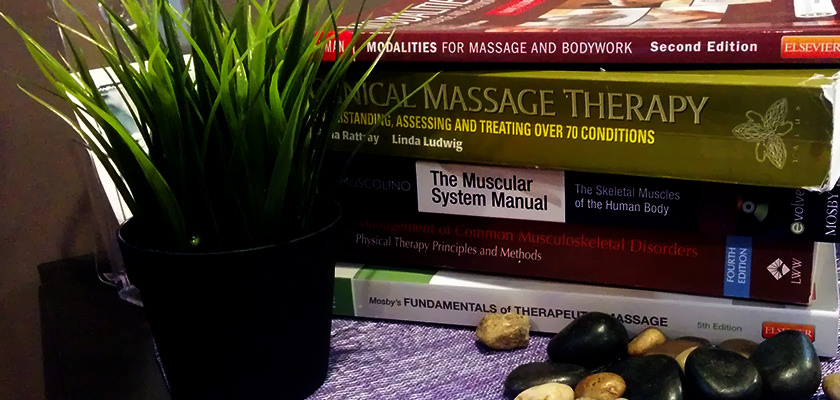Fibromyalgia Syndrome: Understanding and Managing the Condition.
By Luis Gerardo Galvan Reyes, RMT.
February 28th, 2017.
Back in the ‘90s, fibromyalgia (FM) was broadly described as painful non-articular rheumatic condition of at least three months’ duration, characterized by widespread muscular achiness and palpable tender points at prescribed locations on the body.1
Whilst fibromyalgia is a relatively common disorder, it’s still not well understood. However, it’s now considered a syndrome (FMS) described as a multifactorial condition involving problems with neurotransmitter and hormone imbalances, sleep disorders, and ultimately chronic pain in muscles, tendons, ligaments, and other soft tissues. FMS is frequently seen with chronic fatigue syndrome, irritable bowel syndrome, migraine headaches, temporomandibular joint disorders, and several other chronic conditions.2
The causes of FMS are not clear, and it’s diagnosis is mostly made by exclusion, since a physician will discard other conditions by exhausting testing protocols (x-rays, blood tests, etc).3 Common factors among sufferers include stress hormones imbalances, sleep disorders, neurotransmitter imbalances, and trauma.4 Some psychological factors (ie. stress, anxiety) may also be present.
The signs and symptoms of FMS can vary widely from one person to the next, but some of the most common indicators include the following:5
• Stiffness after rest.
• Poor stamina.
• Fatigue.
• Memory problems and poor concentration (aka fibro fog).
• Widespread pain in shifting locations that is extremely difficult to pin down.
• Variable pain character and intensity (it can range from a deep ache to burning and tingling, from low/moderate to severe).
• Painful tender points (in predictable pairs distributed among all quadrants of the body).
• Sensitivity amplification and low pain tolerance (all kinds of sensation become more intense and likely to cause pain, including light, sound, and smells, but is true especially of cold, texture, and pressure).
These symptoms can be triggered or aggravated by overexertion, lack of exercise, stress, anxiety, depression, lack or poor quality of sleep, trauma, extremes of temperature or humidity, and infectious illness.6
While FMS is not a life-threatening or progressive condition, it can greatly affect one’s quality of life. For some people, for example, is possible to maintain their daily routine; others become quite debilitated, which impairs them to keep a job or participate in physical activities.7
Massage Therapy is indicated as a treatment for Fibromyalgia Syndrome.8 Light and gentle work is recommended above deep and vigorous techniques, since the latter can cause fatigue and even exacerbate some symptoms. This is also why short treatments of 45 to 60 minutes are preferred over long sessions.9
Massage treatments are known to reduce stress and pain in FMS patients. Benefits of Massage Therapy also include improving tender points and sleep, reducing anxiety and depression, and alleviating stiffness and fatigue.10
As with any other condition, a client to client approach is always the best alternative. Listening to each person’s goals and assessing their response to treatment is the safest route to provide responsible health care that will translate in improvements to their overall health and quality of life.
I hope you learned a little bit after reading this piece, and that my writing was clear enough to make it easy to read. If you ended up with more questions than answers, please feel free to ask away, email me to office@nochessinluna.com putting "ARTICLE 2017-0228: Question" as subject, or "ARTICLE 2017-0228: Feedback" if you just want to make a comment or point out errors in the presented information. If you want me to write about a topic in particular please request it with the subject "ARTICLE Topic: Suggestion".
Thank you for reading, see you next week!
(^-^)b
(1) RATTRAY, Fiona and Ludwig, Linda. "CLINICAL MASSAGE THERAPY", (Canada, TALUS, 2005): 981.
(2) WERNER, Ruth. “A MASSAGE THERAPIST’S GUIDE TO PATHOLOGY”, 5th Edition (USA, Lippincott Williams & Wilkins, 2013): Kindle edition, location 7657/30390.
(3) RATTRAY, Fiona. Ibid: 983.
(4) WERNER, Ruth. Ibid: Location 7695/30390.
(5) WERNER, Ruth. Ibid: Location 7660/30390.
(6) RATTRAY, Fiona. Ibid: 983.
(7) RATTRAY, Fiona. Ibid: 983.
(8) WERNER, Ruth. Ibid: Location 7686/30390.
(9) WERNER, Ruth. Ibid: Location 7728/30390.
(10) RATTRAY, Fiona. Ibid: 984.




